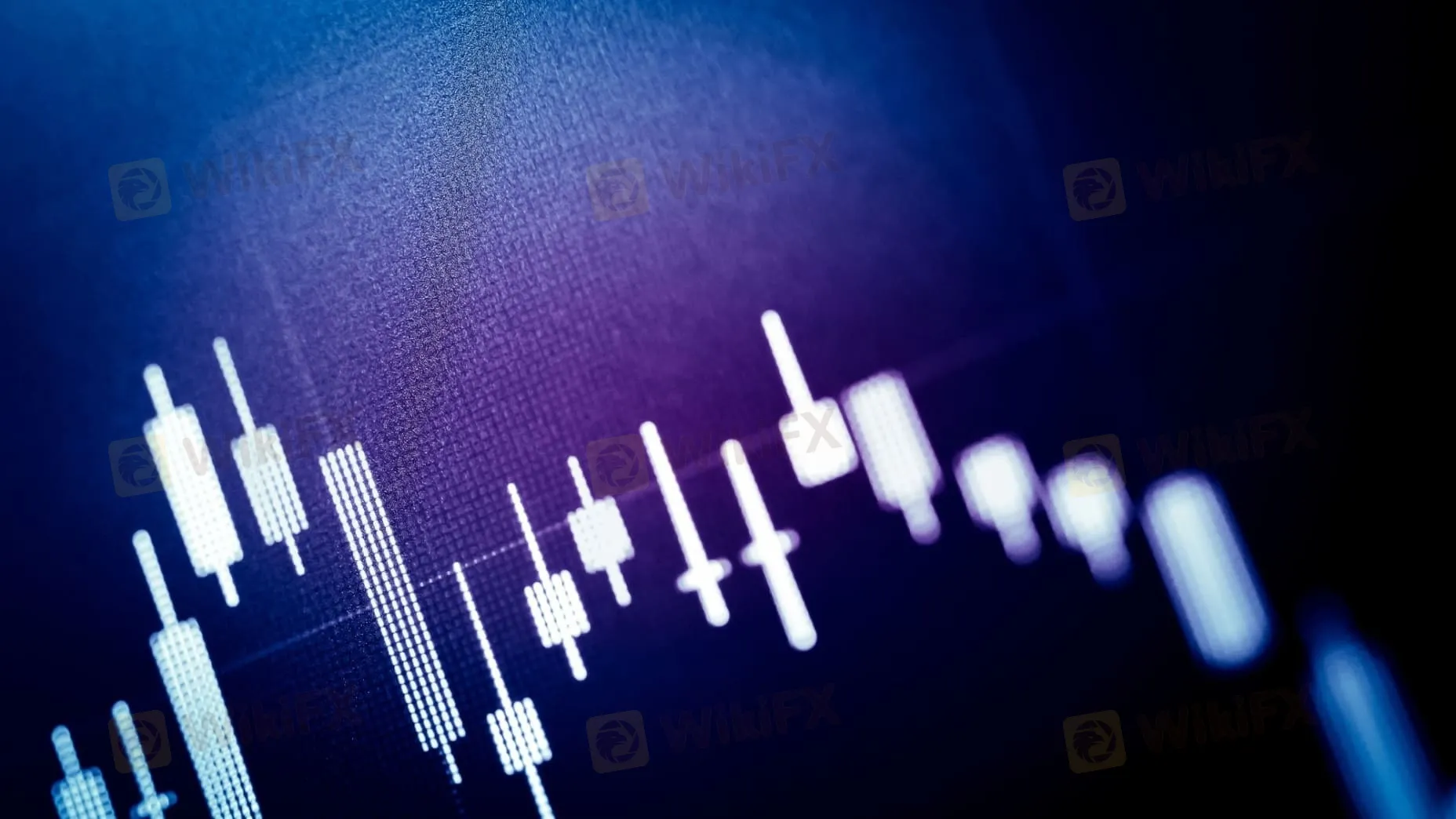Abstract:Macro Events shape energy prices and currency values in real time.
- Currency swings alter oil production costs and supply, especially for countries with floating exchange rates.
- Geopolitical tensions or policy shifts can spark volatility in both crude oil and forex markets.
- Economic indicators like GDP growth and inflation quickly impact currency demand, which then affects global oil prices.
These links reveal how market sentiment and uncertainty ripple across energy and forex markets.

Macro Events shape energy prices and currency values in real time.
Key Takeaways
- Macro events like geopolitical tensions, central bank policies, and trade changes cause big shifts in energy prices and currency values.
- Rising energy prices help oil-exporting countries strengthen their currencies, while oil-importing countries often see weaker currencies.
- Central banks influence energy costs by changing interest rates, which affects inflation and currency strength.
- Investor mood and risk sentiment can quickly move both energy and forex markets, making it important to watch market feelings.
- Commodity currencies such as the Canadian and Australian dollars react strongly to energy price changes, showing global economic health.
Macro Events

Geopolitics
Geopolitical tensions often trigger sharp movements in energy prices. When countries in key oil-producing regions face conflict, the risk of supply disruption rises. For example, recent escalations between Iran and Israel, along with U.S. military actions, have increased uncertainty around the Strait of Hormuz. This area serves as a vital route for global oil shipments. Even limited disruptions can push crude prices higher, affecting economies worldwide. Analysts from leading research groups warn that such events can cause price surges similar to past crises. The Middle East, holding about half of the worlds proven oil reserves, plays a central role in these dynamics.
Central Banks
Central banks influence energy prices through monetary policy decisions. When a central bank raises interest rates, the national currency often strengthens. A stronger currency can make oil imports cheaper for that country, which may lower domestic energy prices. On the other hand, lower interest rates can weaken the currency, making energy imports more expensive and pushing prices up. Central banks also shape inflation expectations, which can affect both energy demand and price trends. Macro Events like policy meetings and official statements from central banks often lead to immediate market reactions.
Trade Policy
Trade policy changes can create volatility in energy markets. Adjustments such as tariffs, quotas, or new trade agreements impact the flow of energy commodities across borders. Empirical studies show that trade policy uncertainty, especially in large markets like China, significantly increases coal price volatility. Researchers found that when trade policy becomes less predictable, energy prices fluctuate more. This volatility can reduce industrial output and influence broader economic conditions. Macro Events related to trade policy often ripple through global energy markets, affecting both producers and consumers.
Economic Data
Economic data releases serve as important Macro Events for energy markets. Reports on GDP growth, employment, and manufacturing activity signal changes in energy demand. Strong economic data usually points to higher energy consumption, which can lift prices. Weak data may suggest lower demand, putting downward pressure on prices. Market participants closely watch these releases to adjust their expectations and strategies. Timely economic data helps explain sudden shifts in energy prices and highlights the interconnectedness of global markets.
Energy-Forex Links

Trade Balance
Energy prices play a key role in shaping a country's trade balance. When oil prices rise, oil-exporting countries often see higher export revenues. Their currencies may strengthen as foreign buyers need more of their currency to pay for oil. For example, countries like Saudi Arabia and Norway benefit from higher oil prices because energy exports make up a large part of their economies.
On the other hand, oil-importing countries such as Japan or India face higher import bills when energy prices climb. Their trade deficits can widen, putting downward pressure on their currencies. Central banks and policymakers watch these shifts closely. Changes in the trade balance can trigger currency adjustments as markets respond to new flows of money between nations.
Note: A positive trade balance from energy exports often supports a stronger currency, while a negative balance from high energy imports can weaken a currency.
Inflation
Energy prices directly affect inflation rates. When oil and gas prices increase, transportation and production costs rise. This leads to higher prices for goods and services. Central banks may react by raising interest rates to control inflation. Higher rates can attract foreign investment, which supports the currency.
For oil-exporting countries, rising energy prices can boost government revenue and spending. This can lead to stronger economic growth and a more stable currency. In contrast, oil-importing countries may struggle with higher inflation and weaker currencies. Their central banks might need to act quickly to prevent runaway price increases.
A sudden drop in energy prices can have the opposite effect. Lower energy costs reduce inflation, which may prompt central banks to lower interest rates. This can weaken the currency as investors seek higher returns elsewhere.
Risk Sentiment
Market risk sentiment often drives both energy and forex markets. When investors feel uncertain, they may move money out of riskier assets and into safe havens like the US dollar or gold. Energy prices can become more volatile during these times. For example, during the COVID-19 pandemic, researchers found strong links between shifts in risk sentiment, exchange rate swings, and stock market volatility in BRICS countries. These connections show that investor mood can quickly ripple through both energy and currency markets.
Recent studies also highlight how oil price shocks spill over into other financial markets, such as green bonds. Changes in investor sentiment can amplify energy price swings and impact currency values. Financial stress and shifting moods among investors often lead to sharp moves in both oil prices and forex rates, especially during periods of crisis or uncertainty.
Tip: Monitoring risk sentiment helps traders and analysts anticipate sudden changes in both energy and currency markets.
Commodity Currencies
Commodity currencies respond quickly to changes in energy prices. These currencies belong to countries that export large amounts of raw materials, such as oil, gas, or minerals. Examples include the Canadian dollar (CAD), Australian dollar (AUD), and New Zealand dollar (NZD).
When energy prices rise, demand for these currencies often increases. For instance, after the Iran-Israel ceasefire, the AUD/USD and NZD/USD pairs rallied as energy market sentiment improved and the US dollar weakened. This reaction shows how geopolitical events and energy trends can boost commodity-linked currencies.
Commodity currencies often act as a barometer for global energy trends. When oil and gas prices move, these currencies usually follow. Investors watch them closely to gauge the health of the energy market and broader economic outlook.
Real-World Cases
Russia-Ukraine
The Russia-Ukraine conflict has reshaped global energy and forex markets. Russia, a major oil and gas exporter, faced sanctions that restricted its energy exports. These sanctions reduced global supply and pushed oil prices higher. European countries scrambled to find new energy sources. Their currencies, such as the euro, weakened as energy costs soared. The Russian ruble also experienced sharp swings. Investors watched these moves closely, as energy price shocks often led to sudden changes in currency values.
OPEC Moves
OPEC decisions often set the tone for global oil prices. When OPEC members agree to cut production, oil prices usually rise. This benefits oil-exporting countries. Their currencies, like the Saudi riyal or the Norwegian krone, tend to strengthen. In contrast, oil-importing countries may see their currencies weaken. OPEC announcements create immediate reactions in both energy and forex markets. Market participants track these meetings for clues about future price trends.
Dollar Trends
The US dollar acts as the worlds primary reserve currency. Most global oil trades use the dollar. When energy prices spike, demand for the dollar often increases. Investors view the dollar as a safe haven during periods of uncertainty. For example, during recent geopolitical tensions in the Strait of Hormuz, the US dollar outperformed other currencies. The USD/JPY pair climbed above 147.00 as investors sought safety.
Emerging Markets
Emerging markets feel the impact of energy price swings more acutely. Geopolitical risks in key regions, such as the Strait of Hormuz, have caused crude oil prices to surge above $77 per barrel. The Iranian parliaments move to potentially close the Strait threatens about 20% of global oil and gas demand. Experts from major banks predict oil prices could reach $120-$150 per barrel if the Strait closes.
- Higher energy prices often lead to weaker emerging market currencies.
- The US dollar tends to strengthen as investors seek stability.
- Currency pairs like USD/JPY reflect these shifts, with the dollar rising against rivals during energy price shocks.
Market observers note that energy-driven volatility in emerging markets can quickly spill over into global forex trends.
Investor Insights
Market Reactions
Investors often respond quickly to changes in energy prices caused by Macro Events. Historical data shows that geopolitical shocks usually lead to short-term drops in equity markets. These declines often recover within weeks. For example, after major conflicts, markets have bounced back as investors shift focus to long-term fundamentals. When oil prices rise due to tensions, investors tend to move money into safe havens like gold, the Japanese yen, or the Swiss franc. Sector performance also varies. Defense stocks often gain during periods of conflict, while energy stocks may lag or benefit depending on policy changes and price trends.
Market reactions reflect a balance between short-term risk aversion and confidence in economic recovery.
Policy Impact
Central bank decisions and government policies shape how markets react to energy price swings. When central banks avoid raising interest rates during energy shocks, markets tend to recover faster. In contrast, tightening monetary policy during high energy prices can prolong market downturns. Recent trends show that investors pay close attention to central bank meetings and economic data releases. These events help them gauge the likely direction of interest rates and currency values. Policy responses to Macro Events often determine whether market volatility is short-lived or persistent.
Risk Management
Investors use several strategies to manage risk during periods of energy and forex market volatility. Diversification remains a key approach. By spreading investments across different sectors and asset classes, investors reduce exposure to sudden shocks. Many also turn to safe-haven assets when uncertainty rises. Monitoring market sentiment and macroeconomic indicators helps investors adjust their portfolios quickly. Advanced platforms now use AI-driven analysis to track over 20,000 global sources, providing early warnings about emerging risks in energy and currency markets.
- Diversification across sectors
- Allocation to safe-haven assets
- Real-time monitoring of macro trends
Macro Analysis
Macro analysis has become essential for understanding the links between energy prices and forex markets. Modern platforms use AI and large language models to process vast amounts of data. These tools analyze geopolitical tensions, monetary policy changes, and supply chain disruptions. Specialized data tagging covers energy production, infrastructure, and inventory trends. Investors benefit from insights that draw on up to 10 years of historical data. Industry recognition confirms the value of these AI-driven approaches. By leveraging macro analysis, investors gain a clearer view of how Macro Events shape market movements and asset values.
Macro Events shape the relationship between energy prices and forex markets. The table below highlights key correlations that drive these linkages:
Volatility metrics, such as VEX, help investors measure risk during uncertain times. Macro analysis gives market observers tools to interpret global shifts, not to predict trades.
FAQ
What are macro events in financial markets?
Macro events include geopolitical conflicts, central bank decisions, trade policy changes, and major economic data releases. These events often cause large movements in energy prices and currency values.
How do energy prices affect currency exchange rates?
Energy prices impact trade balances and inflation. Oil-exporting countries often see their currencies strengthen when prices rise. Oil-importing countries may experience weaker currencies as import costs increase.
Why do investors watch central bank actions during energy price swings?
Central banks set interest rates and guide inflation expectations. Their decisions can influence currency strength and market confidence. Investors track these actions to understand possible shifts in forex and energy markets.
Which currencies react most to oil price changes?
Commodity currencies like the Canadian dollar (CAD), Norwegian krone (NOK), and Russian ruble (RUB) often move with oil prices. These countries rely on energy exports, so their currencies reflect changes in global oil demand and supply.
















